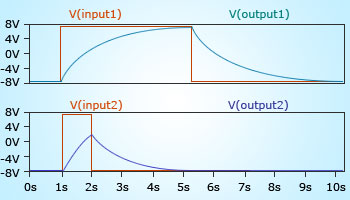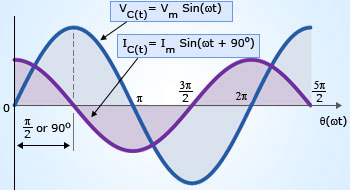 Capacitance Vs Input voltage
Charging and discharging of an AC capacitor, with different input voltage signals. The capacitance of
a capacitor differs with that of the input voltage.
Capacitance Vs Input voltage
Charging and discharging of an AC capacitor, with different input voltage signals. The capacitance of
a capacitor differs with that of the input voltage.
Capacitor in AC Circuit: If the capacitors are connected across a DC voltage, they get charged and act as temporary storage devices. As the capacitors become fully charged they will block the flow of any more electrons on to its plates. Hence the capacitor blocks the DC current after it gets charged completely.
If we apply alternating voltage to the capacitor, it will charge and discharge simultaneously with a frequency rate determined by the frequency of the supply AC voltage. Thus the capacitance of the capacitor in AC circuits depends on the frequency of the input signal, that is constantly charged (or) discharged.
 Capacitor lags current
Capacitor lags current
We have at 0° ( the angle between the current and the voltage) the supply voltage has an increasing rate of change in a positive direction which can result in maximum charging current. When the applied voltage reaches its peak value at 90° , we have the supply voltage with no increase (or) decrease. Hence there would be no current flow in the circuit.
When the applied voltage begins to decrease to zero at 180°, the slope of the voltage becomes negative which makes the capacitor to discharge completely in the negative direction. At 180° point along the line, the rate of change of the voltage becomes maximum and hence maximum current flows at that instant and the cycle continues.
Thus for AC–capacitors the current will be minimum when the applied voltage is at its maximum and vice–versa. Therefore the current leads voltage by 90° (or) 1/4 th of a cycle. Thus Capacitor lags current by 90° .